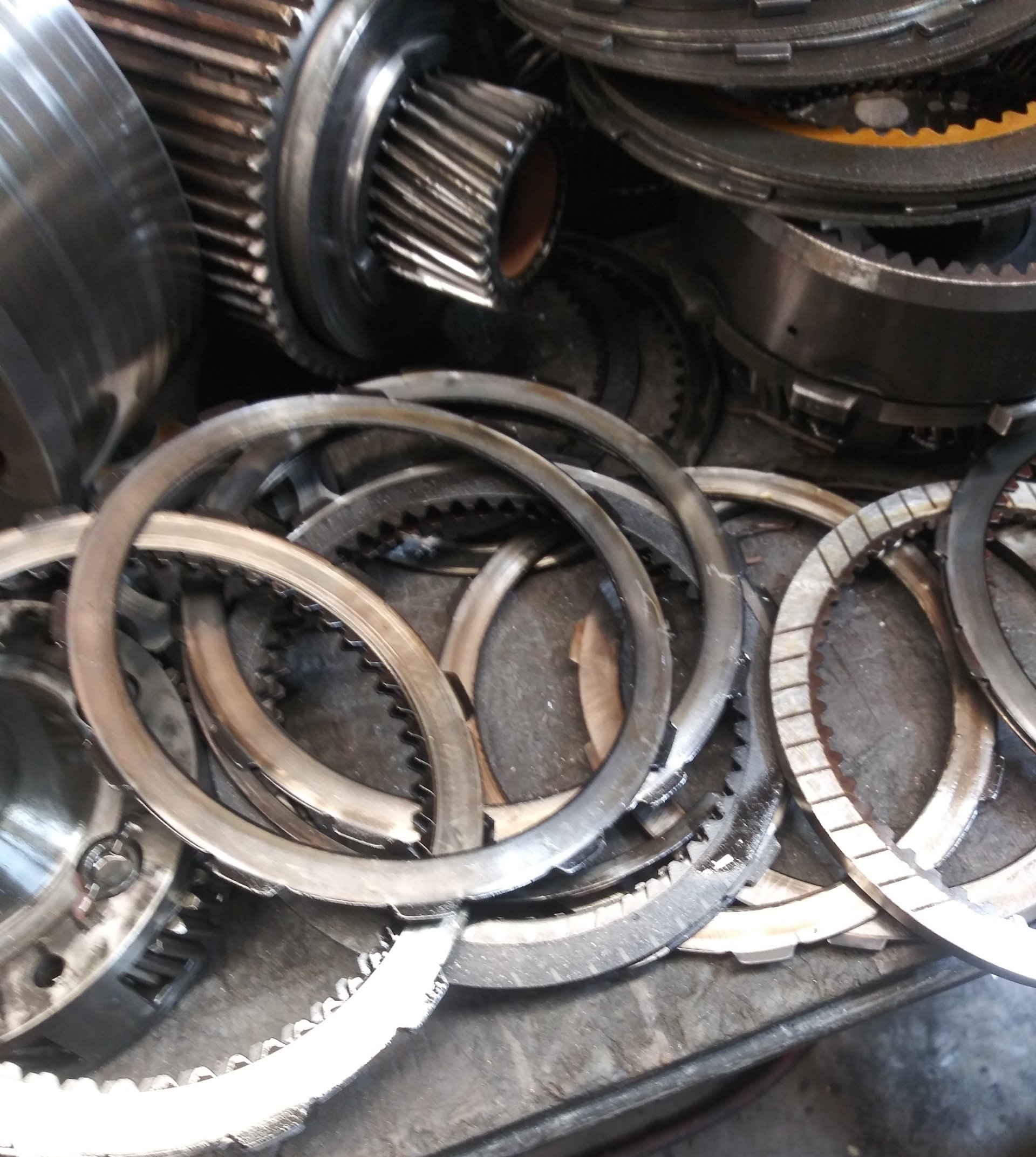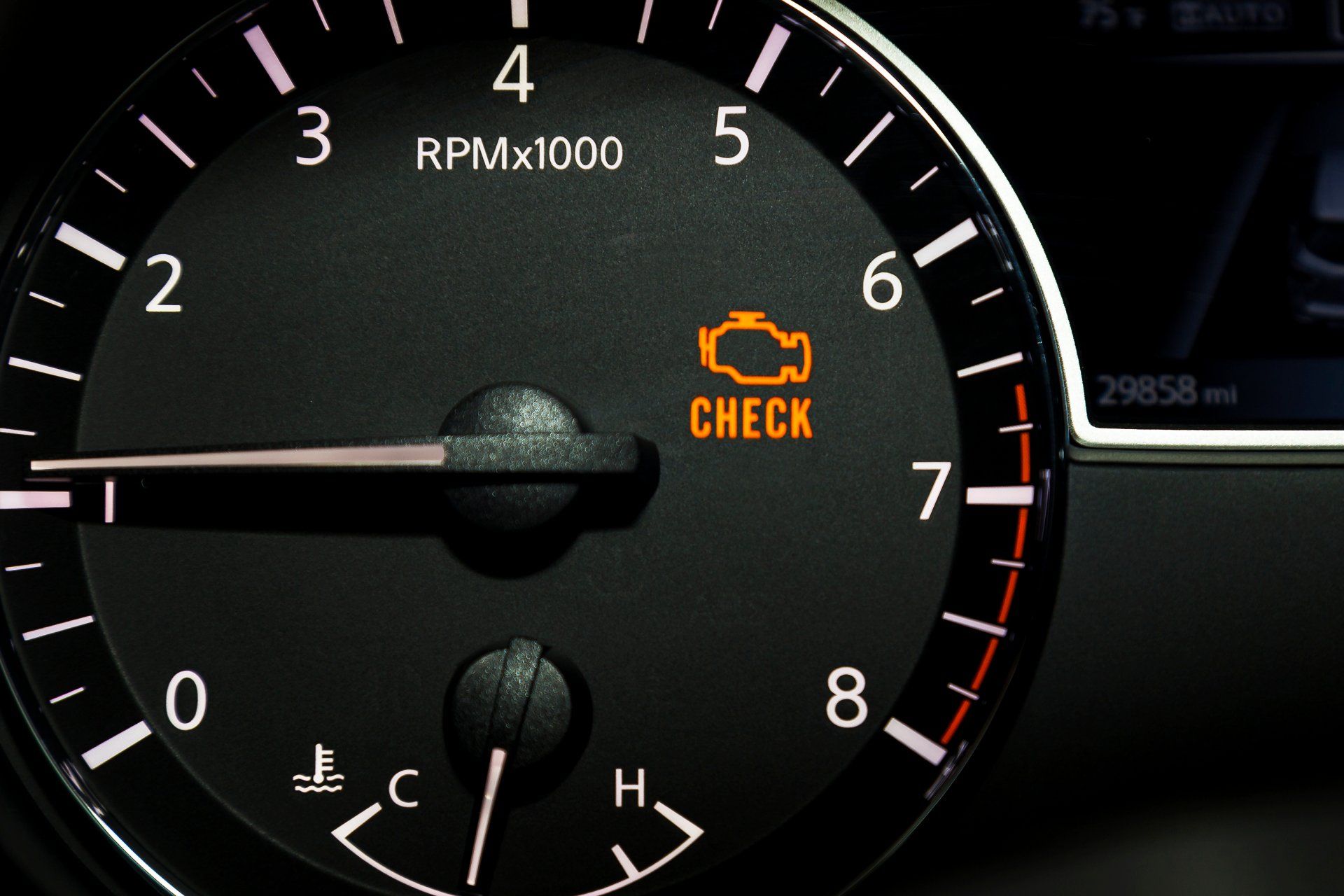Transmission Repair
Unfortunately, many people ignore the transmission system until there is a major problem by noticing it and hoping that problem will work itself out. The result, as the problem becomes more severe, is usually even more extensive damage.
The following symptoms may indicate a problem with your transmission:
- Failing or delayed shifting
- Thumping or lagging when shifting
- The engine revs up when you apply the gas, but the car doesn't
- Red, pink, or brown puddles underneath your car
- The consistent need to add transmission fluid
- Your car fails to move when cold, but improves once it’s warmed up
- An overheating engine
- Unusual noises, such as a whining sound when you step on the accelerator, a grinding noise, or a banging noise when you come to a stop
As you can imagine, there are various kinds of transmission repair
tasks and options you may pick from based on the nature of your
car's breakdown. Understanding what those choices are can help you
make informed decisions when confronted with a choice of transmission fixes to weigh.
tasks and options you may pick from based on the nature of your
car's breakdown. Understanding what those choices are can help you
make informed decisions when confronted with a choice of transmission fixes to weigh.
A Repair for Each Kind of Transmission Malfunction.
Some transmission repair work is simple and mechanical in nature.
Other times, it is a combination of mechanical and electronic engineering
that is required to get your car back on the road.
Other times, it is a combination of mechanical and electronic engineering
that is required to get your car back on the road.
Most minor fixes are simple things that are done without removing the
transmission from the motor vehicle. If yours is a computer-controlled
transmission that's not shifting properly, it's frequently caused by a
computer sending erroneous signals because of faulty sensor, or the
transmission isn't reacting to the command due to a poor connection
or defective solenoid pack.
transmission from the motor vehicle. If yours is a computer-controlled
transmission that's not shifting properly, it's frequently caused by a
computer sending erroneous signals because of faulty sensor, or the
transmission isn't reacting to the command due to a poor connection
or defective solenoid pack.
If a non-computer controlled transmission is changing too early or too
late, it might require an adjustment to the throttle cable. If the vehicle
has a vacuum modulator in lieu of a throttle cable, there's an
adjustment which may be made with an adjustment screw in certain layouts. In vehicles with modulators, however, it's necessary to make sure there are no vacuum leaks and the motor is operating at peak
efficiency.
late, it might require an adjustment to the throttle cable. If the vehicle
has a vacuum modulator in lieu of a throttle cable, there's an
adjustment which may be made with an adjustment screw in certain layouts. In vehicles with modulators, however, it's necessary to make sure there are no vacuum leaks and the motor is operating at peak
efficiency.
A transmission is re-sealed to fix external transmission fluid flows. If you see spots of reddish oil on the
floor under the vehicle, your transmission might require a re-seal job. To look at a transmission for leaks, a technician will set the vehicle on a lift and inspect the unit for signs of oil leaks. If a leak is seen at any
of the external seals or gaskets and the transmission performs well, the tech will probably recommend that the
transmission be re-sealed. Replacing accessible pieces. There are a
variety of components that are available without requiring the elimination of the
whole transmission.
floor under the vehicle, your transmission might require a re-seal job. To look at a transmission for leaks, a technician will set the vehicle on a lift and inspect the unit for signs of oil leaks. If a leak is seen at any
of the external seals or gaskets and the transmission performs well, the tech will probably recommend that the
transmission be re-sealed. Replacing accessible pieces. There are a
variety of components that are available without requiring the elimination of the
whole transmission.
The components that are available, however, vary
from transmission to transmission and many transmission repair
centers would hesitate to offer meaningful warranties on outside repairs for the simple reason they can't see whether there are any further internal issues in the components which are only reachable by transmission removal. Also called"rebuilding a transmission", a comprehensive overhaul requires the removal and disassembly of the
transmission completely. Each part is inspected for damage and wear, then cleaned in a special cleaning solution, or substituted with a different part based on its condition. Parts which have friction
surfaces, like bands and clutches are substituted as are all seals and
gaskets.
from transmission to transmission and many transmission repair
centers would hesitate to offer meaningful warranties on outside repairs for the simple reason they can't see whether there are any further internal issues in the components which are only reachable by transmission removal. Also called"rebuilding a transmission", a comprehensive overhaul requires the removal and disassembly of the
transmission completely. Each part is inspected for damage and wear, then cleaned in a special cleaning solution, or substituted with a different part based on its condition. Parts which have friction
surfaces, like bands and clutches are substituted as are all seals and
gaskets.
The torque converter can be replaced, usually with a remanufactured one. Technical service bulletins are assessed to see whether the automobile manufacturer recommends any modifications to correct design
flaws which were discovered after the transmission was built. Automobile manufacturers often make update kits available to transmission shops to solve these design flaws.
flaws which were discovered after the transmission was built. Automobile manufacturers often make update kits available to transmission shops to solve these design flaws.
Fixing or Overhauling a Transmission
When a transmission requires an overhaul, there are two choices you might have. The first is to eliminate your current transmission and overhaul it, then place the rebuilt unit back on your vehicle. The second choice is to
replace your current unit with another unit which has been rebuilt or remanufactured. Used
transmissions frequently have questionable histories which could create a completely new set of challenges. New transmissions, meanwhile, are largely aftermarket transmissions billed as new but are actually rebuilt
transmissions with new pieces.
replace your current unit with another unit which has been rebuilt or remanufactured. Used
transmissions frequently have questionable histories which could create a completely new set of challenges. New transmissions, meanwhile, are largely aftermarket transmissions billed as new but are actually rebuilt
transmissions with new pieces.




